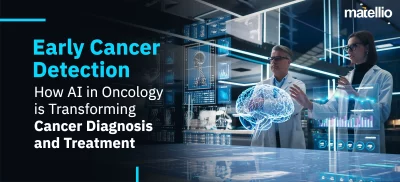
Ever wondered if there’s a smarter way to handle data beyond the cloud? Enter edge computing, a tech innovation that’s reshaping the game. No, this does not mean cloud integration services are any less important. But, let’s be honest, the energy drain and latency issues have left a gap. Edge computing use cases are showing remarkable solutions that bridge this gap.
With a staggering projected global revenue of $274 billion by 2025, these applications are the buzz you can’t ignore. Industries like manufacturing and telecommunications are already gearing up for its magic. Now, you may wonder, “Why the sudden hype?” Well, right after the pandemic, the Industrial Internet of Things (IIoT) became a major player in the edge computing scene when it comes to practical use. It gained more than 29% of their earnings in 2022.
Besides, there’s a continuous global demand for advanced communication infrastructures. Due to this, edge computing use cases have significantly risen as more and more businesses want to go digital. Next, you want to know the secrets these growing enterprises are implementing. That’s what we will unravel in this blog today!
What is Edge Computing?
Before you immerse yourself in motivation through edge computing use cases, it’s better to learn what it actually is. Though the name may make the technology sound complex, in reality, it’s pretty simple. We all see new devices emerging in our surroundings every day. Previously, there were song players on your laptop and smartphone. Now, you have Alexa that runs on the magic of fast connectivity with your Wi-Fi router. Like this, as more and more devices become capable of connecting with each other, a bunch of them pop up right at the network’s edge. This is where much of the future’s data storage and processing action will happen, giving birth to the term “edge computing,” often dubbed the “Third Act of the Internet.”

Edge computing use cases involve bringing computing power to the local nodes of a network. It has 3 outstanding benefits:
- Better Performance
- Lower Latency
- Reduced costs
Let’s go back to the example of Alexa. It’s a smart speaker that usually offloads most of the computational tasks to servers owned by Amazon. With edge computing, smart speakers could handle and process user requests directly on the device itself. So, if you’re planning to integrate the technology into your business operations, you’re on the right track. However, don’t forget to select highly reliable IoT development services to ensure you’re ahead in the game.
Popular Edge Computing Use Cases You Should Know
As connectivity technologies like IoT and 5G undergo a surge, data processing seems to be the topmost priority for various businesses. That’s why we can witness a rapid adoption of edge computing. Though a lot is yet to unfold, the current applications that are getting pretty popular are given below.
 Autonomous Vehicles
Autonomous Vehicles
Everyone knows that automatic driving is here to stay. However, automatic vehicles require gathering and analyzing various data points like direction, speed, location, and traffic congestion. So, how exactly do self-driving cars work smoothly? Well, these cars act as smart devices with powerful computational skills. They do so only when they can perform the data analysis in real-time. From car sensors to cameras, they have to exchange data within milliseconds, and that’s exactly where edge computing comes in. It performs the data processing in no time.
The outcome? The driver gets prompt suggestions regarding where to park or to get the car in the lane when it drifts out of the lane. Overall, we can say such edge computing use cases help devices, even cars, to stay more responsive to their surroundings. And as this interaction becomes faster, the need for edge computing will rise.
 Smart Grids
Smart Grids
Edge computing is going to play a big role in making smart grids more common. This tech can also assist businesses in handling their energy use smarter.
Factories, offices, and plants are moving their sensors and IoT gadgets to an edge platform. This setup keeps an eye on how much energy is being used and checks it out right when it’s happening. This real-time info helps companies and energy providers work out cool new agreements. Like, they can decide to run heavy-duty machines when not many folks need electricity. Additionally, such edge computing use cases enable enterprises to rely on eco-friendly energy sources.
 Boosting Enterprise Security
Boosting Enterprise Security
Edge computing has the power to make things safer. It lets companies set up video monitoring and biometric scanning. You know, the kind of surveillance checks in real-time if only the right people perform the permissible activities.
Businesses are relying on this type of edge computing use cases to make super quick checks using things like eye scans. So, when someone looks into a scanner, the edge device right there checks if they’re on the approved list. Isn’t it reminding you of spy movies? Well, they were also showcasing the power of edge computing.
And guess what? You can take this security to the next level. With edge computing and an experienced AI development company, you can get software that offers 100% security with a smart system. Equipped with the power of AI, your security tool will enable you to always stay ahead of the hackers.
 Smart Cities
Smart Cities
If your business is part of government development plans, edge computing can work wonders. Local governments are adopting edge tech to create smart communities and streamline roadways. This allows intelligent traffic control and simplifies various tasks. Officials can swiftly adapt based on real-time data, even rerouting traffic through edge-processed vehicle data. City workers and planners benefit by using edge computing use cases mainly through edge devices. These tools process sensor data for prompt decision-making, enhancing responses in areas like power grids and public spaces.
 Predictive Maintenance
Predictive Maintenance
Don’t you feel like a winner when you anticipate and address issues before they lead to failures? That’s what this edge computing use case is all about. So naturally, it’s among the popular ones across various sectors. But how does edge computing pave the way for predictive maintenance? Well, instead of sending all the data to a centralized server, edge computing involves processing and storing data directly near the equipment itself.
This approach is beneficial because it reduces delays (latencies) in data transmission. By deploying IoT sensors directly on the machines, you can constantly monitor the health of the equipment in real-time. Any changes or anomalies can be swiftly analyzed right at the edge without the need to transmit vast amounts of data back and forth to a remote server. So, whether you’re into logistics or manufacturing, you can proactively detect and address potential problems through software equipped with edge computing capabilities.
Read More: How Edge Computing Helps to Secure Iot?
Industry-Based Edge Computing Use Cases
Digital transformation services are taking a central role in all enterprise operations. And when it comes to edge computing, this technology is no exception to this rising revolution. Many sectors are embracing this technology with others to expedite their processes. Some of the industries doing so are given below.
 Edge Computing Use Cases in Healthcare
Edge Computing Use Cases in Healthcare
Edge computing has a lot of cool applications in healthcare. It speeds up everything by putting the computing power right where the data is. This is super important in healthcare, where time matters a lot. Check out these ways it’s making things better:
Smart Hospitals
Some medical services are becoming super smart with connected devices. These include wearables, sensors, and medical gear. This connectedness provides doctors with real-time information. Due to this, doctors can now spot health issues early and streamline their daily functions. Plus, it keeps patient data extra safe.
Remote Check-Ups
Edge computing can process data collected through blood pressure monitors and wearables without having the patients physically present in their clinic. Thus, through these critical metrics, they can understand the patient’s condition online and prescribe them the correct treatment. Moreover, if something’s off, they get an alert right away through these devices.
Handling Emergencies
When there’s a medical emergency, like sudden heart rate changes, edge computing use cases can come to the rescue. How? Imagine having wearables and sensor data readily available all the time. In such a scenario, doctors or caretakers will get alerts whenever a patient’s condition degrades. This way, they can act fast to help patients.
Reliable Clinical Trials
During studies, doctors can look at data in real time. This helps release reliable medications and therapies faster. Here, edge computing is the key element that lets them spot issues and make better choices for patients. It’s like having a shortcut to better treatment.
 Edge Computing Use Cases in Retail and Manufacturing
Edge Computing Use Cases in Retail and Manufacturing
Edge computing is making production practices and shopping super smart and convenient. Here’s how it’s shaking things up:
Quicker Inventory Management
For both manufacturing and retail, it’s challenging to spot various articles kept in various corners. Thus, both warehouses and stores can use edge tech to watch inventory in real-time. This stops stuff from running out of stock, ensuring you never run out of business. From perishables to clothes, edge computing can be a savior.
Store magic
Many retailers have already implemented IoT and Edge in their stores. By using edge computing, stores can gather instant info on how many people visit, where they go, and how they act. This helps set up stores better, placing stuff where it gets noticed most and making sure staff is in the right spots.
Supply Chain Wizardry
One of the best edge computing use cases for manufacturing and retail is smarter supply chain management. The technology helps build smart shelves that know when stuff is almost gone or past its prime. This enables you to order replacements on the spot. Such activities make your whole supply chain work better, reducing waste.
Smart Checkout
This is another popular edge computing application in retail. You must’ve seen how shoppers or customers now place their orders through the smart checkout counters installed in stores. These counters have screens that sense what you enter and use edge computing to suggest stuff you might like. They also calculate prices and handle payments in a flash. This means shorter lines and happier shoppers.
 Edge Computing Use Cases in Transportation
Edge Computing Use Cases in Transportation
Like autonomous vehicles, there are many other edge-computing applications in transportation. This technology is a big deal here, processing real-time data magic at the edge of networks. Check out the cool functions it’s doing:
Smooth Traffic
Using cameras and sensors, we can know what’s up with traffic right now. This helps authorities make roads less jammed, saving time and fuel and cutting down pollution. It even spots dangers like crashes and potholes, making roads safer.
Optimized Fleet Management
If your business requires taking vehicles to different places, edge computing use cases are relevant for you. The technology helps with real-time tracking. You get where they are, how fast they’re going, and more. This data helps plan routes, save fuel, and make deliveries snappy.
Better Public Transport
Buses and trains can be more on-time and less crowded. Plus, the passenger numbers data lets operators adjust fly routes. This smooths out public transport and eases city traffic.
Also Read- Most Popular Transportation IoT Use Cases for Business Advancement
 Edge Computing Use Cases in Agriculture
Edge Computing Use Cases in Agriculture
With the world’s population heading towards 9.7 billion by 2050, we need smarter ways to feed everyone without harming the planet. Cue this high-tech hero that’s changing farming:
Smart Farming
Modern farmers are adding sensors to their fields. While this may not be new to you, the potential of these sensors is bigger than you imagine. They collect data regarding soil moisture, temperature, and humidity. By looking at this stuff in real-time, farmers know when to plant, water, and fertilizer. It makes crops better and wastes less.
Pest Control
Farmers can now easily spot crop pests and diseases. How? Drones with edge computing capabilities can fly over fields, spotting trouble and helping farmers fight back. They can use treatments only where needed, keeping chemicals in check and crops healthy.
Weather Forecast
With weather sensors, farmers get instant forecasts. It’s one of the coolest edge computing use cases in agriculture, as it helps with critical decisions. It helps them decide when to plant, harvest, and prepare for extreme weather. They can also check for harmful stuff like carbon monoxide. Moreover, alerts keep them in the loop so crops stay safe.
Quality Check
Farmers use sensors to check if food is top-notch. Think of sensors in barns that keep an eye on temperature and humidity. This means food stays fresh, there is less waste, and people get safe, yummy food supplies.
Implement Edge Computing Use Cases With Matellio
In the crazy-fast business world today, it’s super important to keep up with the latest tech to stay ahead. Edge computing is one of those cool new things that can totally ramp up operations and help your business hit goals.
If you’re curious about what this tech can do, Matellio is the crew to team up with. Our experts can dive deep into your current tech setup and team up with you to make a special plan for bringing in edge computing solutions that fit your particular business needs. Moreover, from AI development services to enterprise solutions, we have it all in store for you. So, what are you waiting for? Explore the possibilities now! Fill out the form.

 Autonomous Vehicles
Autonomous Vehicles Smart Grids
Smart Grids Boosting Enterprise Security
Boosting Enterprise Security
 Smart Cities
Smart Cities Predictive Maintenance
Predictive Maintenance Edge Computing Use Cases in Healthcare
Edge Computing Use Cases in Healthcare
 Edge Computing Use Cases in Retail and Manufacturing
Edge Computing Use Cases in Retail and Manufacturing Edge Computing Use Cases in Transportation
Edge Computing Use Cases in Transportation Edge Computing Use Cases in Agriculture
Edge Computing Use Cases in Agriculture

